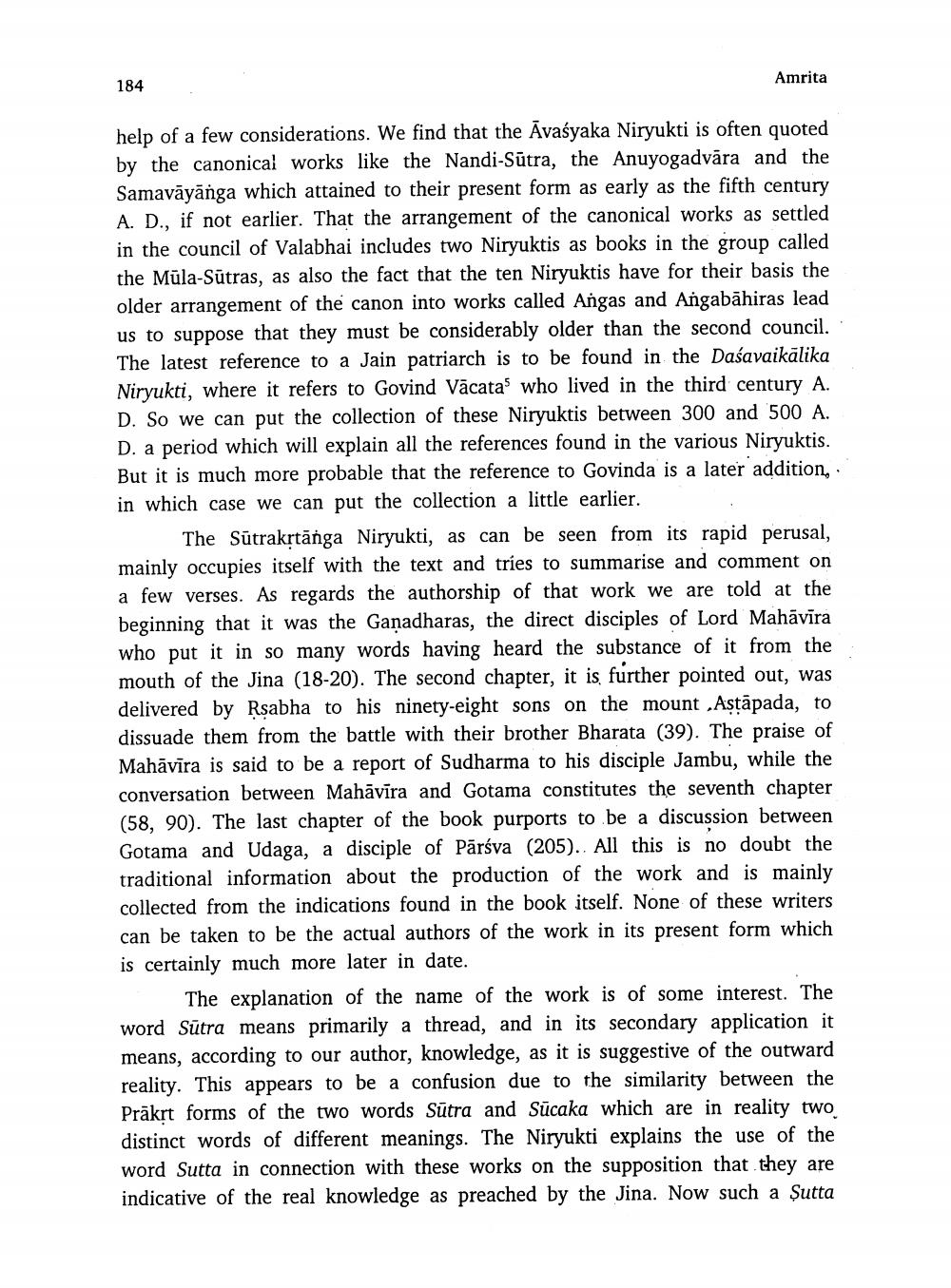________________
184
Amrita
help of a few considerations. We find that the Avaśyaka Niryukti is often quoted by the canonical works like the Nandi-Sutra, the Anuyogadvāra and the Samaväyänga which attained to their present form as early as the fifth century. A. D., if not earlier. That the arrangement of the canonical works as settled in the council of Valabhai includes two Niryuktis as books in the group called the Müla-Sutras, as also the fact that the ten Niryuktis have for their basis the older arrangement of the canon into works called Angas and Angabahiras lead us to suppose that they must be considerably older than the second council. The latest reference to a Jain patriarch is to be found in the Daśavaikälika Niryukti, where it refers to Govind Vacata' who lived in the third century A. D. So we can put the collection of these Niryuktis between 300 and 500 A. D. a period which will explain all the references found in the various Niryuktis. But it is much more probable that the reference to Govinda is a later addition, in which case we can put the collection a little earlier.
The Sütrakṛtānga Niryukti, as can be seen from its rapid perusal, mainly occupies itself with the text and tries to summarise and comment on a few verses. As regards the authorship of that work we are told at the beginning that it was the Ganadharas, the direct disciples of Lord Mahävira who put it in so many words having heard the substance of it from the mouth of the Jina (18-20). The second chapter, it is further pointed out, was delivered by Rṣabha to his ninety-eight sons on the mount .Aṣṭāpada, to dissuade them from the battle with their brother Bharata (39). The praise of Mahavira is said to be a report of Sudharma to his disciple Jambu, while the conversation between Mahävira and Gotama constitutes the seventh chapter (58, 90). The last chapter of the book purports to be a discussion between Gotama and Udaga, a disciple of Pärśva (205). All this is no doubt the traditional information about the production of the work and is mainly collected from the indications found in the book itself. None of these writers can be taken to be the actual authors of the work in its present form which is certainly much more later in date.
The explanation of the name of the work is of some interest. The word Sutra means primarily a thread, and in its secondary application it means, according to our author, knowledge, as it is suggestive of the outward reality. This appears to be a confusion due to the similarity between the Präkrt forms of the two words Sutra and Sucaka which are in reality two distinct words of different meanings. The Niryukti explains the use of the word Sutta in connection with these works on the supposition that they are indicative of the real knowledge as preached by the Jina. Now such a Sutta




